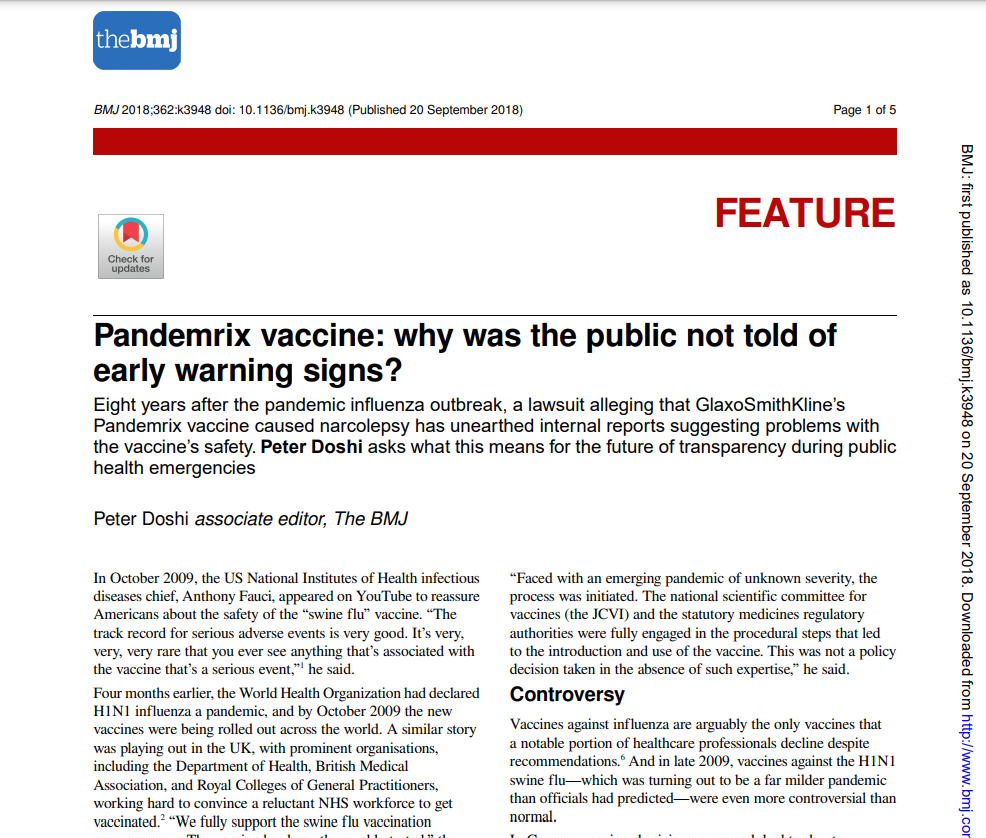‘Avoidable catastrophe‘
The vaccination programme continued in Ireland as well. ‘The Irish government kept inviting people to get vaccinated,’ Jefferson observed. ‘This was when it was quite clear that the pandemic was on the wane and it was nowhere near the catastrophe portrayed by influenza researchers, governments,
industry, and the media.’
Clare Daly, a member of the Irish parliament, called the adverse events after Pandemrix a ‘completely avoidable catastrophe,’ and has been demanding answers for over a year. In the Irish National Assembly last year, she told the then prime minister, Enda Kenny, ‘The Health Service Executive (HSE) decided to purchase Pandemrix and continued to distribute it even after they knew it was dangerous and untested, and before most of the public in Ireland received it.’
In response, the Taoiseach said that concerns about the safety of Pandemrix and actions by
GSK deserve ‘immediate analysis.’ The BMJ requested an update on the investigation from the Irish Department of Health but did not receive a direct answer.
What EMA knew—or could have known—about the comparative safety of GSK’s pandemic vaccines is hard to discern. It told The BMJ that ‘EMA does not perform comparative benefit and risk evaluations between products approved in the EU, or between EU products and products approved or used outside the EU.’
But, had it wanted to, did the agency have the data to conduct such an analysis? Despite the similarity between the two vaccines, Arepanrix was not authorised in the EU until March 2010, late in the pandemic, and data reporting requirements for the two vaccines differed.
‘While it might have been possible to estimate reporting rates based on usage data, which are difficult to obtain during a pandemic, EMA does not have a methodology to compare reporting rates between two products (note that the pandemic influenza pharmacovigilance updates included number of reports, not rates),’ an EMA spokesperson said. Jefferson was uncompelled. ‘What is the purpose of pharmacovigilance if nobody is acting on the information? This information took eight years to come to light through academic work and litigation. Is this acceptable? If the information at our disposal is partial, that is the direct consequence of secrecy, which should not surround any public health intervention.’
Pandemrix and Arepanrix were designed for a pandemic and were removed from global markets after the pandemic. Whatever adverse events they may have caused, they are vaccines of the past. But the events of 2009-10 raise fundamental questions about the transparency of information. When do public health officials have a duty to warn the public over possible harms of vaccines detected through pharmacovigilance? How much detail should the public be provided with, who should provide it, and should the provision of such information be proactive or passive?
If history were to repeat itself, does the public have a right to know?“

You can read here.

